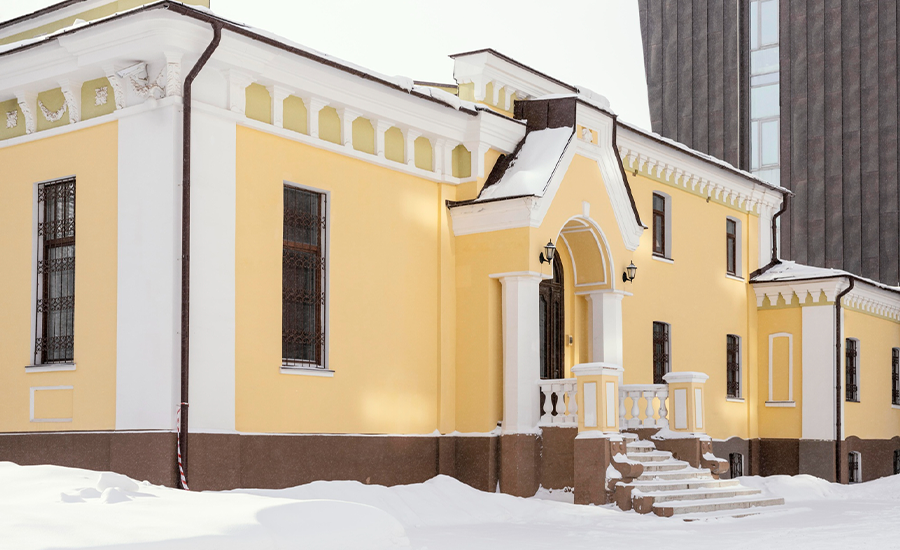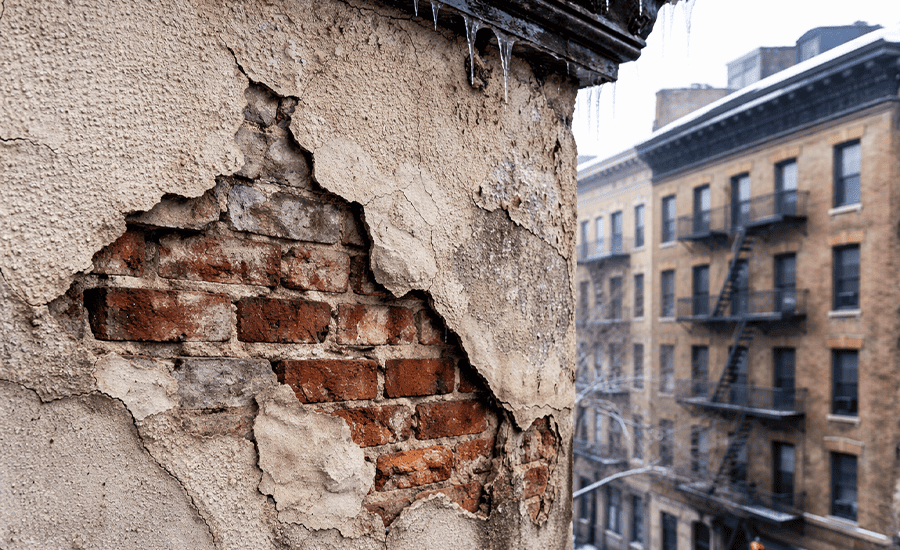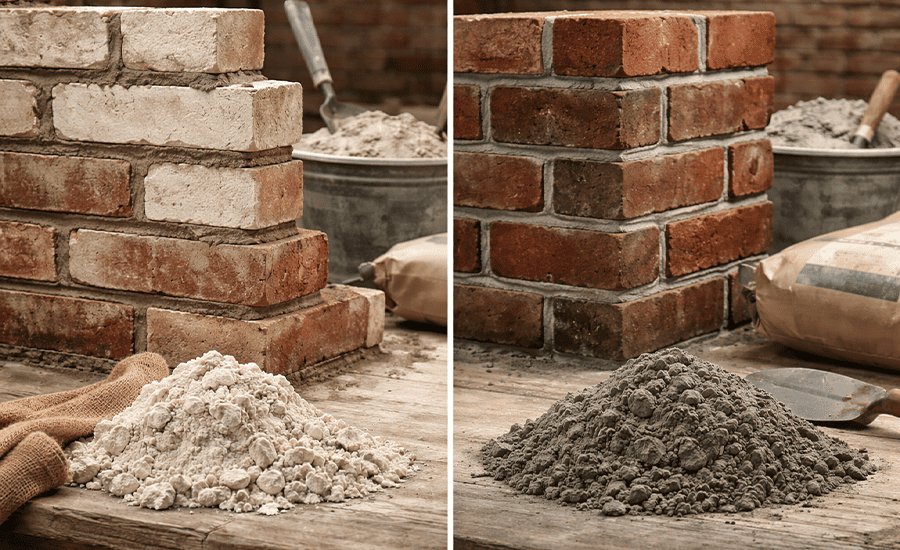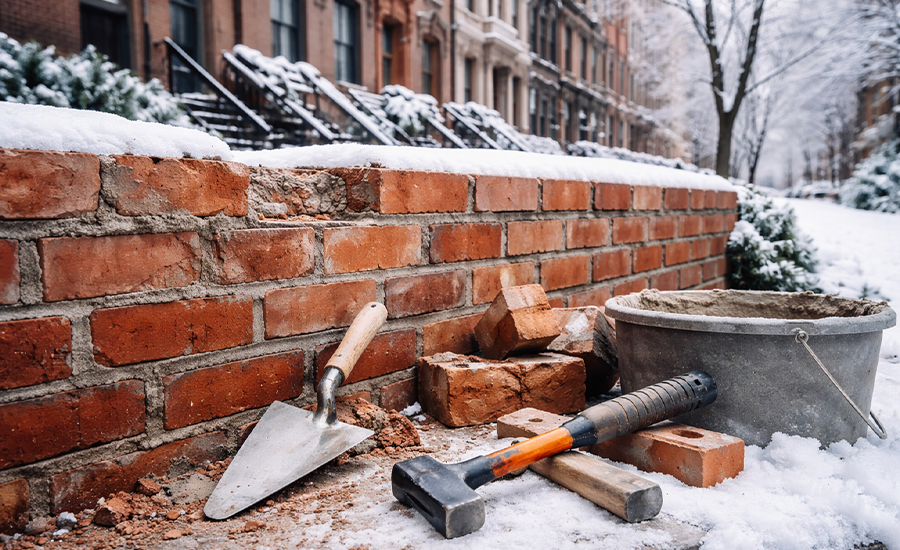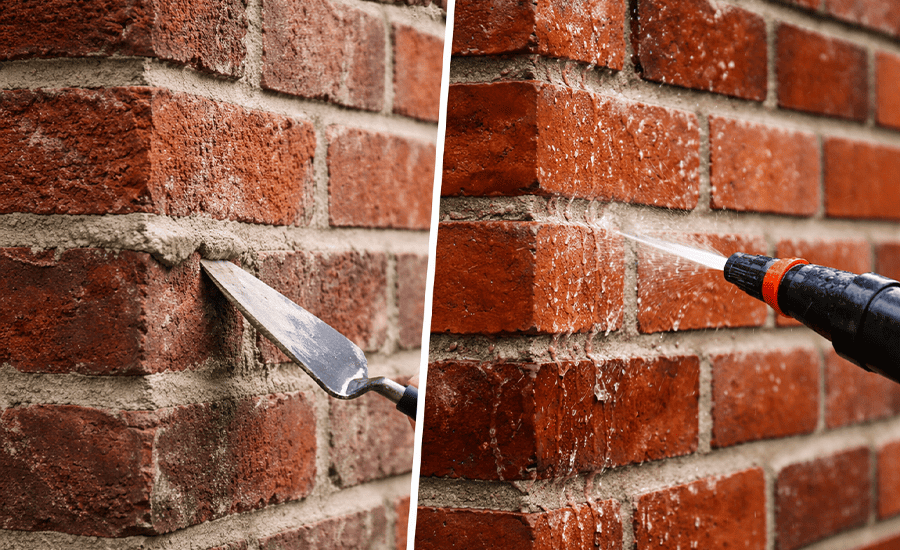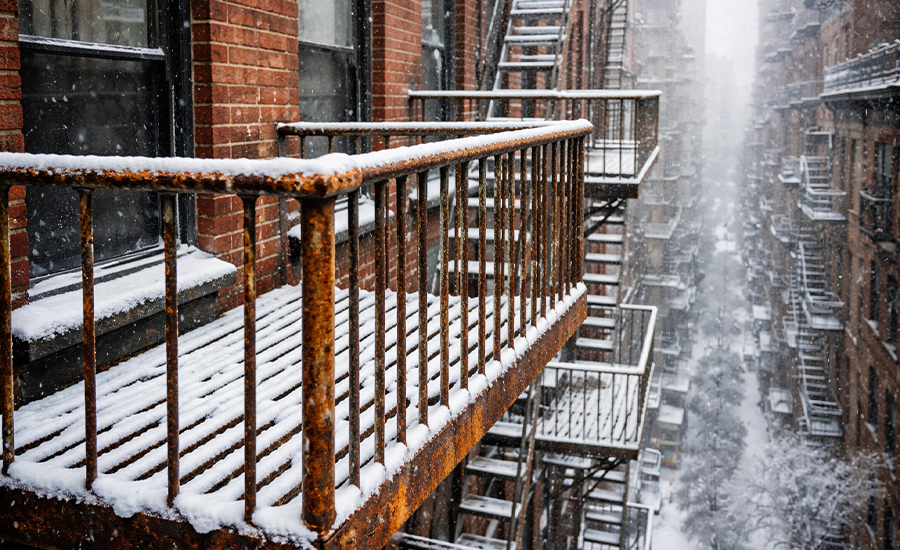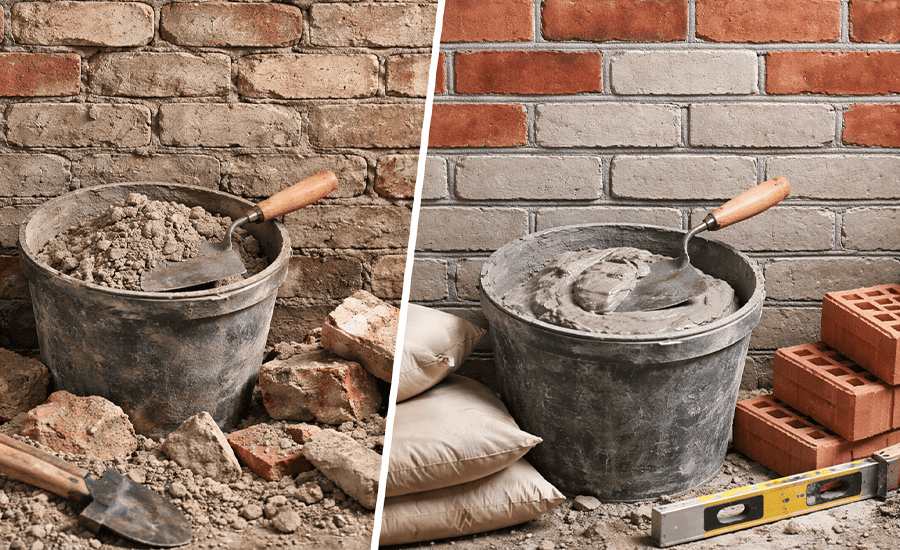As soon as winter arises, the only question every homeowner asks is, Can we install stucco in winter? So the answer is no. It is advised not to go for stucco installation and repairs in winter as the curing time gets shorter, and the air doesn’t dry the mortar or stucco properly because of the humidity and high moisture rate. Stucco is composed of cement-based materials and needs proper curing for high-strength and lasting adhesion. Make sure to plan your stucco installations before winter, using premium-grade materials under the surveillance of professionals, so that they will guide you to manage your stucco application with attention to detail. If your stucco dries properly, it can enhance the architectural beauty and structural soundness, ensuring it will last for decades with maintenance and keeping up with safety regulations.
In this blog, we’ll explore the impact of cold weather on your stucco, the drawbacks of installing stucco in winter, steps to avoid, and preventive guidelines.
How Weather Conditions Affect Stucco Performance?
Stucco is a highly durable and decorative element composed of a mixture of cement, sand, lime, and water. Hydration of the stucco plays a vital role in the finishing and durability, which occurs when the water reacts with cement and forms an excellent consistency. Stucco application depends on the weather and current temperature. The following are key points that indicate how weather conditions affect the stucco performance:
- In warm weather, this reaction occurs smoothly, leading to a durable finish.
- In cold weather (below 40°F / 4°C), hydration slows down or even stops, causing weak bonding, cracking, and poor adhesion.
Winter Time Issues Faced During Stucco Installation
Let’s have a look at the drawbacks of stucco installation in winter, which can be harmful to your residential and commercial buildings:
Slow dry/curing process
In winter, the curing time increases as the drying of cement slows down, which causes setbacks in project completion.
Risk of frost damage
When stucco freezes before proper curing & hydration, it can cause cracked surfaces, delamination from the surface, and a brittle texture.
Thermal stress damage
Fluctuating temperatures can disrupt the drying process, resulting in a cracked surface & dull finish.
Water Retention
High-humidity weather can compromise the stucco bonding and result in water staining & blemished finish.
Weather-related delays
Frosty weather & short daylight hours badly affected the curing.
Safe Stucco Application Practices in Winter
Here is the step-by-step method for applying stucco in winter using high-quality materials and temperature-regulated techniques.
Surface Preparation
- Monitor weather conditions: Ensure temperatures won’t drop below 40°F (4°C) for at least 48–72 hours.
- Get the surface ready for application: Remove dirt, frost, and moisture.
- Preheat the substrate: Heated air blowers or temporary enclosures can prevent cold surface temperatures.
Add Winter-Grade Modifiers
Some manufacturers offer accelerating admixtures that help the stucco set faster and resist freezing.
- Avoid using chloride-based accelerators (they can corrode metal lath).
- Opt for non-chloride accelerators to safely speed up curing.
Maintain Warm Water Temperature
- Use lukewarm (not hot) water when mixing stucco.
- Maintain the temperature of the mix between 60°F and 80°F (15°C–27°C).
- This ensures that the hydration process starts efficiently even in a cold environment.
Install Temporary Heated Shelters
- Enclose the work area with polyethylene sheets or tarps.
- Use indirect-fired heaters to maintain temperatures above freezing.
- Ensure proper ventilation to prevent moisture accumulation.
Shield Newly Applied Stucco
- Cover fresh stucco with insulated blankets or tarps immediately after application.
- Maintain consistent temperature and humidity throughout the curing process.
- Avoid exposing the surface to direct heat; it may dry unevenly.
Increase Drying Period
Allow for a longer curing period during winter. Stucco that normally sets in 48 hours may take 72 to 96 hours in cold weather.

Common Errors In Cold-Weather Application
By sidestepping these common mistakes, you can not only streamline the functionality of fire escape but also save time, money, and headaches from frequent repairs.
| Practice to Avoid | End Result |
|---|---|
| Working in freezing or near-freezing conditions | Insufficient hardening & poor surface integrity |
| Overheating stucco surfaces | Non-uniform finish & structural fissures |
| Applying stucco over the moistened surfaces | Surface mildew formation |
| Not using wrapping sheets to insulate freshly applied stucco | Ice-related deterioration |
| Not giving the stucco proper time for curing | Loss of elasticity |
Professional Advice For Working With Stucco In Winter
Before starting winter stucco work, keep these professional tips in mind for better results:
- Plan your project mid-day when temperatures are higher.
- Never apply stucco on frozen surfaces or during snowfall.
- Avoid night applications unless you can maintain heat through the curing period.
- Monitor temperatures continuously with a surface thermometer.
- Follow manufacturer-specific winter guidelines; different stucco brands may require varying temperatures or additives.
Conclusion
Applying stucco in winter can be challenging due to freezing temperatures and moisture. With proper planning, controlled heating, and the use of winter-grade materials, you can still achieve a strong and lasting finish. Always follow professional guidance to prevent cracking or weak bonding. Careful execution ensures your stucco maintains both beauty and durability year-round.
Sardar Restoration Corp proudly serves every corner of NYC, including the Bronx, Manhattan, Brooklyn, Westchester, and Queens. Our services are designed to meet your specific needs, providing top-quality solutions wherever you are. Check our service areas to see how we can assist you in your location.
Contact us today at (+1) 917-355-8556 or sardarrestoration@gmail.com, or visit us at 2770 Fish Ave, Bronx, NY 10469, United States.
FAQs
Do you apply stucco during the winter season?
Yes! Sardar Restoration Corp. handles all the stucco texture and composition work during the winter season in residential and commercial properties. We use heated enclosures, insulated coverings, and winter-grade materials to ensure proper curing and a flawless finish, no matter the temperature.
How do you prevent stucco from freezing during winter applications?
Sardar Restoration Corp. makes sure to maintain a suitable and stable temperature above 40°F (4°C) using indirect heaters and protective tarps, which prevent stucco from freezing.
Can stucco be repaired in cold weather?
Yes, minor stucco repairs can be done in winter if the area is enclosed and temperature-controlled to ensure proper curing and bonding.
What temperature is too cold to apply stucco?
Applying stucco below 40°F (4°C) is not recommended, as the hydration process stops and leads to weak adhesion and surface damage.
Do you use any special materials or additives for winter stucco?
Yes, Sardar Restoration Corp. uses high-premium quality non-chloride accelerators and warm mixing water to help the stucco set faster in colder temperatures without compromising strength or appearance.
How long does it take for stucco to cure in cold weather?
In winters, stucco takes at least 48-72 hours for proper curing and drying. Sardar Restoration Corp. carefully monitors the curing process and keeps it protected until it’s fully set.



